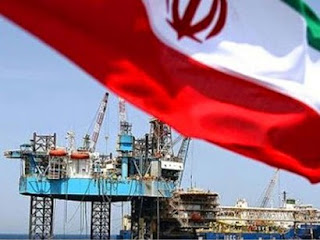Why Iran is raising energy prices
Iran stopped allocating 60 liters of gasoline a month for private cars, saying that gasoline was eliminated entirely from its subsidized energy basket.
The limited subsidized gasoline price was 22 cents. There is about 2.1 billion liters of unused subsidized gasoline, while Oil Ministry warned that quota cards would expire on September 22.
Currently a liter of gasoline is sold at about 30 cents, while the premium gasoline price increased by 3 cents to 36.3 cents. The gasoline price in Iran is still less than regional prices.
Iran started elimination of energy subsides gradually in 2010, when the price of a liter of gasoline was ten times less than it is now.
Iran has increased the energy prices since late 2010 in two steps, but with a huge devaluation in the national currency (rial) the prices are still very low.
For instance a cubic meter of natural gas was sold for about 100 rials to the Iranian housing sector in 2010 while a US dollar was 10,000 rials, while currently the minimum gas price is 440 rials (for those who uses less than 250 cm per month) and the maximum price is about 18,000 rials (for those who uses 1,250 cm per month). However, currently a US dollar is sold at above 33,000 rials.
Iranian Oil Minister Bijan Namdar Zanganeh said last June "currently over $90 billon worth of liquid fuel is being consumed in Iran. He added that the government pays $80 billion of the mentioned figure".
Head of the Iran Energy Efficiency organization (IEEO), Hossein Sajjadi said May 24 that Iranians pay for the natural gas and electricity 12.5 times and 7 times less than global prices. A KWh of electricity costs (for those who uses less than 100 KWh in month) about 1.2 cent while the maximum price (for those who uses less than 600 KWh in month) is about 8.7 cent.
Runaway energy consumption
Iran's primary energy consumption increased from 1.6 billion barrels of oil equivalent per annum (OE/a) in 2010 to above 2 billion barrels of OE/a, of which about 22 to 25 percent of this figure is wasted without reaching any consumer.
The country is expected to face energy consumption growth of 5.4 percent in coming years.
Huge energy consumption in Iran exists while the energy efficiency rate is very low and the energy intensity is very high. For instance, the efficiency of Iran's thermal power plant, which shares above 80 percent of the total power generation (276 billion KHw) in Iran, is about 37 percent.
According to the latest official statistics, released by IEEO, Iran's energy intensity was 1.5 times more than the global rate. The energy intensity is calculated as units of energy per unit of GDP.
There is not any new report about the energy intensity rate in Iran, but the country's GDP has decreased from about $550 billion in 2011 to about $370 billion last year. On the other hand, the energy consumption increased significantly during this period. According to Iran's Energy Minister Hamid Chitchian's statement last year, the country's energy intensity was 4 times more than the global average.
According to official statistics, for every thousand dollar gross revenue gain, about 0.63 ton of oil equivalent energy is consumed in the country.
CO2 emission
Iran ranks 7th place in term of producing CO2 in the world. According to World Bank statistics, Iran produced above 0.6 gigatons of CO2 (GtCO2) in 2012, about 15 percent more than 2008, while the global figure was 32.3 Gt in 2012. There is not updated figures, but according to Iran's official statistics, some 0.56 GtCO2 of CO2 was produced in Iran during 2013, while power plants share 37 percent of this volume.
Iran's air is one of the most polluted, and ranked 12th (with 127 mg per cm in 2010) with four Iranian cities among the ten most polluted areas in the world, according to the World Health Organization, a United Nation's body.
Iran planned to decrease its primary energy consumption level to 1.148 billion barrels of OE in 2020 to save $449 billion by this date.
Iran needs a $192 billion investment to decrease its energy intensity rate by 50 percent (assuming a 6-percent GDP growth annually) to economize more than a total of $1,100 billion in next 15 years.
Air pollution costs the country $16 billion annually, according to the World Health Organization. Iran’s last available statistics officially put the figure at $8 billion in 2011.
As low energy prices are the prime motive for Iranians using more energy without attempting to increase the energy efficiency, the government needs to increase prices to get rid of huge subsidy as well as pollution costs.


Comments
Post a Comment